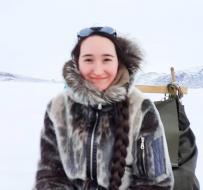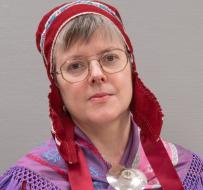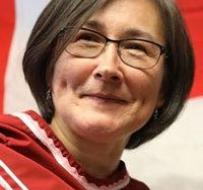Arctic Indigenous Peoples that are represented in the UN socio-cultural Indigenous region of the Arctic include Inuit and Sámi. There are 180,000 Inuit across Inuit Nunaat – Inuit homelands – spanning from Chukotka, Alaska, Canada, and Greenland. An estimated 50,000 – 100,000 Sámi live in Sápmi - Sámi homelands - across Finland, Sweden, Norway, and Russia. Inuit and Sámi have been active within the United Nations Framework Convention on Climate Change (UNFCCC) since its inception at the Rio Earth Summit in 1992.
The Arctic has already seen irreversible transformations due to a changing climate. Inuit and Sámi adapt to climate change with action rooted in their Indigenous knowledge and customary practices. Through practices and initiatives such as the examples on this page and in the info hub / resources section below, the age-old ways of life and livelihoods of Inuit and Sámi are also reflective of their adaptive capacity and their level of resilience in relation to the rapid and ever increasing impacts of climate change.
An example of adaptation action built on the Inuit relationship with the land is the Inuit Circumpolar Council’s Pikialasorsuaq Commission. Pikialasorsuq is the Greenlandic name for the North Water Polynya, which is an area in the Arctic ocean with open water year-round. This polynya, the largest in the Arctic and most northernly, is formed by an ice bridge at its northern most end. This ice bridge is becoming unstable due to climate change and if it fails the fate of the polynya is unknown. The Pikialasorsuaq is extremely biologically productive and is an essential area for millions of sea birds, fish, narwhal, beluga, bowhead, walrus and seals that are dependent on this region, as well as essential for Inuit hunters who provide for their communities. As climate change threatens the stability of area, and the biological foundation of much of the Arctic’s marine life, the Pikialasorsuaq Commission gathered insights from Inuit in the communities around the Pikialasorsuaq in both Canada and Greenland to inform Inuit-led management, monitoring and adaptation action for the region. Recommendations from this Commission are currently being implemented.
For more information as how indigenous peoples across this region and the world are exchanging experiences, building capacity for engagement, and contributing towards climate policies and actions, please explore the LCIPP dedicated web portal.
You are invited to reach out to the regional representative and the alternate, and to share your experiences through the ways to engage button on this web portal.
- Piita Taqtu Irniq (COP 26)
- Victoria Qutuuq Buschman (PhD) (COP 26)
- Áslat Holmberg (COP 26)
- Anders Oskal (COP 26)
- Alicia Sara-Elvira Kuhmunen (COP 27)
- Janice Parson (COP 27)
- Caroline Martel (COP 27)
- Jacqualine Denise Schaeffer (COP 28)
- Alexina Kublu (COP 28)
- Susanna Enni Kristiina Similä (COP 28)
- Lars Niila Inga (COP 28)
- Ruth Suwaksiork Kaviok (COP 28)
Organizations relevant to indigenous peoples in this region will appear here.
Inuit Circumpolar Council (ICC)
Pauktuuit Inuit Women of Canada
The National Inuit Youth Council Canada (NIYC)
News items relevant to indigenous peoples in the region will appear here.
The information on these pages is not intended to be exhaustive. Is this information accurate? If you have any comments, please do not hesitate to contact us: LCIPP@unfccc.int


